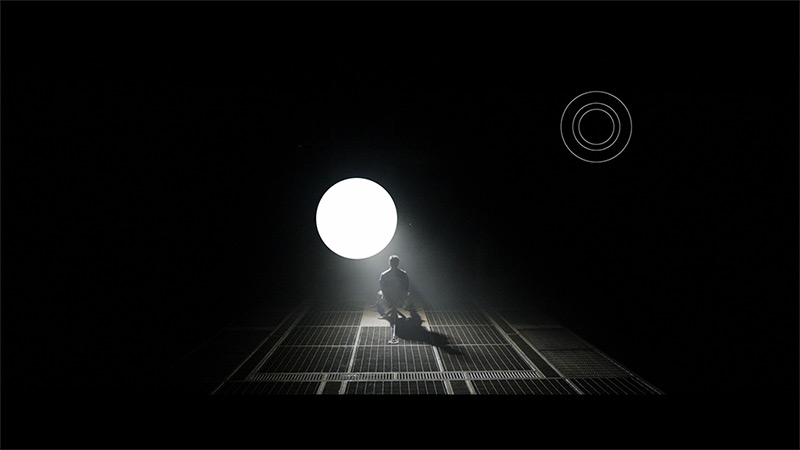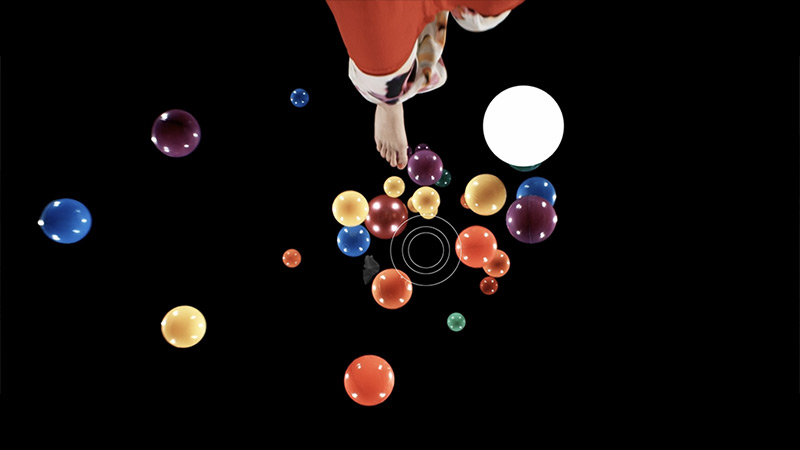LG UR781 is currently the cheapest model from the Korean manufacturer. It is equipped with an excellent WebOS system, which is the greatest advantage of this television. It will satisfy most users with its access to various streaming platforms and capabilities. The television offers adequate picture quality for its price, which will certainly meet the expectations of many basic users. Although its HDR capabilities are somewhat limited by the absence of Dolby Vision or HDR10+, it supports basic formats such as HDR10 and HLG. The television handles low-quality materials fairly well, thanks to the tone mapping smoothing feature that provides smooth and clear transitions, which is especially appreciated when watching films from low-quality sources (e.g., terrestrial television). When it comes to gaming, the television has very low input lag, which is a fundamental criterion. If we are looking for a budget solution, this is quite a nice choice for those who can sacrifice a 120Hz panel for the sake of price. Although the brightness of the television is lower than in competing models, and the colour gamut coverage is limited, the LG UR781 still offers impeccable HDR content appearance due to the presence of dynamic tone mapping. After proper calibration, the television can achieve better colour reproduction and optimal sharpness, significantly enhancing comfort and enjoyment while watching.
- Matching (Score)
- Our verdict
- TV appearance
- Where to buy
- Contrast and black detail
- HDR effect quality
- Factory color reproduction
- Color reproduction after calibration
- Smoothness of tonal transitions
- Image scaling and smoothness of tonal transitions
- Blur and motion smoothness
- Console compatibility and gaming features
- Input lag
- Compatibility with PC
- Viewing angles
- Daytime performance
- Panel details
- TV features
- Apps
- Playing files from USB
- Sound
LG UR781 vs Xiaomi S Mini 2025
Direct comparison


Panel type: LCD VA
Resolution: 3840x2160
System: WebOS
Model year: 2023
Complete the survey to find out the result

Panel type: LCD VA
Resolution: 3840x2160
System: Google TV
Model year: 2024
Complete the survey to find out the result

Overall rating
5.5
7.0
Movies and series in UHD quality
5.4
6.3
Classic TV, YouTube
5.8
6.5
Sports broadcasts (TV and apps)
4.2
6.4
Gaming on console
6.2
8.4
TV as a computer monitor
6.0
8.2
Watching in bright light
3.9
7.3
Utility functions
6.4
4.7
Apps
9.1
9.6
Sound quality
5.2
6.8
Complete the survey to find out what fits your preferences
Advantages
WebOS with a large number of applications
Low input lag values
Works great in combination with PC
High native contrast
Game Bar
VA matrix with MiniLED backlighting – good contrast and deep blacks
High brightness (841 cd/m²) – excellent visibility even in bright rooms
Supports multiple HDR formats: Dolby Vision, HDR10+
High refresh rate: 240Hz, 144Hz, and 120Hz
Low input lag – perfect for gaming
Google TV system – versatile and comprehensive with broad access to apps
The remote does not require pointing at the screen
Pleasant sound with mild bass
Supports audio formats: Dolby Atmos and DTS:X
Disadvantages
Very low brightness
Poor viewing angles
The system can "lag"
Errors in the translation of the TV Menu
Problems with aggressive dimming algorithms – visible in dynamic scenes
Image scaling and tonal transition enhancement features are unstable
Our verdict
Xiaomi, well known as a giant in the smartphone market, has decided to fight for the attention of high-end technology enthusiasts by presenting a television with MiniLED backlighting. The S MiniLED 2025 model looks truly impressive on paper. The vast number of dimming zones provides excellent contrast, and the brightness, reaching impressive levels, can impress both in high-quality HDR materials and in older SDR. The television performs excellently where smooth motion is key. The high refresh rate panel and low input lag make it a good choice not only for sports fans but also for gamers. Support for features such as ALLM and GameBar further enhances the gaming experience. Google TV on this television works as it should – quickly, smoothly, without unnecessary stutters, which we could not say about the model A Pro 2025. Additionally, with such an extensive application library, it will satisfy even the most demanding user. However, not everything looks so good in practice. Despite solid hardware specifications, the television has its drawbacks. The biggest problem is the algorithms managing the dimming zones, which can be quite irritating when watching films in the evening. The operation of individual zones is overly noticeable in dynamic scenes, which can effectively distract our attention from the image. Issues also arise in more demanding HDR scenes despite the truly impressive brightness. Small, bright elements often lose brightness, ruining the effect that a top-quality image should provide. The system is also not free from shortcomings – image enhancement features for lower-quality materials work unevenly, and some options in Google TV are poorly translated or even untranslated. The Xiaomi S MiniLED 2025 has huge potential, but in its current form, it seems underutilised. It is clear that Xiaomi wanted to create something truly good, but several significant shortcomings result in a mixed final effect. A device with high aspirations that needs better software to truly shine. It is an ideal television for brighter rooms, where high screen brightness plays a key role, and local dimming issues become less noticeable. It will also perform excellently as a screen for gamers and for those who value the versatility and functionality of the Google TV system.
TV appearance








Contrast and black detail
5.5/10
6.8/10
Local dimming function: No
Local dimming function: Yes, number of zones: 308 (22 x 14)
Contrast:

Result
4,450:1

Result
4,550:1

Result
4,500:1

Result
4,750:1

Result
3,650:1

Result
182,000:1

Result
38,050:1

Result
18,300:1

Result
10,150:1

Result
5,450:1
Halo effect and black detail visibility:


LG UR781 is a television with a VA panel that stands out for its good native contrast, which is significantly better than that of IPS or ADS screens. Thanks to this technology, bright elements on a dark background look natural and there is no issue with distortion. Unfortunately, the lack of local dimming means that in darker rooms, the black is not perfect – it tends to take on a navy hue, which can be noticeable during night-time viewing.
Despite this, the LG UR781 offers sufficiently good quality in dark scenes, particularly for film enthusiasts. Blacks are deeper than those on IPS panels, allowing for a more cinematic experience. The VA panel also provides stronger contrast, making the image look clearer, and the details in darker shots become more visible. It is a solid choice for those who value better picture quality in evening conditions.
Xiaomi S MiniLED is one of the most affordable MiniLED technology televisions available on the market. The model we tested, with a size of 55 inches, features as many as 308 local dimming zones, which is impressive for this price. Additionally, it uses a VA panel, which naturally offers significantly better contrast than IPS panels. On static test images, the television performed excellently, achieving an impressive contrast ratio of 182,000:1 in the film Oblivion. The blacks were deep, and the details in the light and dark areas of the image were clearly separated. However, in more demanding scenes where the image is dynamic, the situation becomes complicated.
Where lies the problem? The main cause is the local dimming algorithms. Although their work shows promising results on static images, during film playback – that is, in the natural working conditions of the television – they operate too aggressively. In dynamic scenes, such as those from the tested film, you can see how the individual dimming zones "work and flicker," which detracts from the viewer's sense of image coherence. This effect is particularly noticeable in motion, when bright objects move against a dark screen. As a result, although Xiaomi S MiniLED offers excellent contrast on paper, in practice the effect is less satisfying. The aggressive operation of the algorithms spoils the perception of dynamic scenes, making the television average in this category. It's a good example of how MiniLED technology requires not only good specifications but also proper optimisation.
HDR effect quality
3.3/10
4.8/10
Luminance measurements in HDR:

Result
209 nit

Result
185 nit

Result
241 nit

Result
147 nit

Result
234 nit

Result
852 nit

Result
140 nit

Result
385 nit

Result
97 nit

Result
1126 nit
Scene from the movie “Pan” (about 2800 nits)


Scene from the movie “Billy Lynn” (about 1100 nits)


Static HDR10


HDR luminance chart:
Xiaomi S Mini 2025
HDR luminance
LG UR781
HDR luminance
In HDR mode, LG UR781 unfortunately does not impress with its brightness. In tests on five screens, the television achieved only around 200 nits, which is quite a low value for HDR standards. This brightness is similar to levels typical for SDR, causing HDR effects to be insufficiently pronounced, and the image may appear less impressive, especially in dynamic, bright scenes. In HDR mode, it has certain limitations in colour reproduction. This means that colours may not be as intense and rich as in televisions that manage better with a wide colour gamut. In practice, this can make the image less vibrant and dynamic, and HDR effects will not be as spectacular as one might expect. Additionally, UR781 LG has some issues with accurately reproducing colours in HDR mode, resulting in content that may look less vivid.
Since the Xiaomi S MiniLED boasts an impressive number of 308 dimming zones, it is time to test how it performs in HDR tests. Starting with luminance, or the ability to display bright scenes, the television achieved nearly 1000 nits of brightness – a result that can be considered outstanding in this class. Do these figures, however, translate to real experiences in film scenes? In the case of less demanding shots, such as those from the film The Meg, the television indeed showed excellent results, reaching up to 900 nits. Such values are impressive and can truly convey the power of HDR effects.
Unfortunately, much like with contrast, it wasn't without issues. When smaller, brighter elements appear on the screen – as in the challenging scenes from Sicario 2 – the aggressive operation of the dimming zones spoils the entire effect. Brightness in these moments drops to just 100 nits. This is definitely too little to capture the full magic of HDR. Instead of a dynamic and detailed image, the viewer receives a muted, almost flat impression, which takes away all the enjoyment from the viewing experience.
In summary, if we are looking for a television with high brightness for watching films during the day, the Xiaomi S MiniLED will easily fulfill that task. However, its inability to precisely manage the dimming zones means that watching films in the evening, especially in demanding HDR scenes, can be more frustrating than satisfying.
Factory color reproduction
3.9/10
3.9/10


Factory Mode
After calibration


Factory Mode
After calibration
The colour reproduction in LG UR781 in Filmmaker Mode, which although is the best mode available from the factory settings, is not without its flaws. Firstly, the issue is white balance, where the graph shows dips in blue colour levels. This phenomenon results in a shift of hues towards yellow tones, causing the image to appear warmer than it should. Such deviation means that the colours on the screen are not naturally reproduced, which can be particularly noticeable in scenes with a white or neutral background. This can be confirmed by the Test Color Checker, which showed that some colours "shift" into other shades, meaning that the LG UR781 television does not display colours in accordance with reality. This distortion can affect the visual experience, making movie scenes seem less realistic, and details might be displayed in inappropriate colours, negatively impacting the overall image quality.
In terms of contrast, the analysis of the gamma graph revealed drops to a level of 2.0, whereas the optimal value should be 2.4. This means that the television may display darker parts of the image brighter in certain scenes, which reduces their depth and dynamics. Additionally, on the EOTF curve, which is responsible for brightness reproduction, an unnatural spike was observed at the beginning. This phenomenon can result in excessive brightness boost in the brightest parts of the image, leading to loss of detail in very bright scenes.
Xiaomi, like many manufacturers, offers a wide range of picture modes. On the S MiniLED, we can find both IMAX Enhanced and Filmmaker. Our tests were conducted in Filmmaker mode, which theoretically aims to reflect a reference image, but the reality turned out to be somewhat different.
Let's start with the test of SDR content. Here, the television had quite a few issues, especially with white balance. The clearly visible dominance of red made the image look too warm, with all colours taking on a reddish hue. This was particularly noticeable in a comparative scene from the film Star Wars. The brightness characteristics (gamma) also left much to be desired – instead of a smooth transition, we had a real "rollercoaster," with a visible excessive brightening of the screen.
In 4K content, the situation improved significantly. The white balance, although still not perfect, was much more balanced, with a slight dominance of red and blue, but without excessive impact on the overall perception. The EOTF curve (responsible for brightness in HDR) showed some brightening in the brightest parts of the image, which was noticeable, for example, in the test scene from the film Pan that we described earlier. These brightening effects may disturb the precision of the image, but in 4K, the overall effect was much more acceptable than in SDR.
Although Xiaomi S MiniLED can pleasantly surprise with 4K content, its factory settings in SDR require solid adjustments, especially regarding white balance and brightness. This is definitely a television that would benefit from calibration.
Color reproduction after calibration
6/10
7.7/10




After calibration, the colour representation in SDR content is quite good. The white balance has been effectively improved, resulting in natural, balanced hues across various scenes. The gamma has also been adjusted, providing more precise detail in the shadows and highlights of the image. As a result, the LG UR781 television performs well in everyday use, offering solid colour quality and clear, well-balanced images in SDR mode.
However, the situation is worse for HDR content. The LG UR781 television does not support a wide colour gamut, which limits the depth and richness of colours that HDR can offer. The EOTF curve deviates from the ideal, resulting in excessive highlighting of details in the bright parts of the image. Unfortunately, this results in significant colour reproduction errors, as confirmed by tests on the Colour Checker. Additionally, the low brightness level of the panel further negatively impacts the quality of HDR images, causing dynamic range effects to be not fully realised, and colours to appear washed out.
Despite some shortcomings in HDR mode, the television has improved significantly after calibration, especially in SDR content. The improvement in white balance and gamma has greatly enhanced image quality, providing a more natural and cohesive colour representation. Compared to its state before calibration, the difference is clear, and the LG UR781 television now offers better performance in everyday use, particularly in the standard dynamic range.
Xiaomi S MiniLED 2025 is a television that gains a completely new life after calibration. The results are truly outstanding and show how much potential is in this model.
In SDR mode, the white balance is nearly perfectly aligned. The errors are so minimal that in many cases they can be considered negligible. This is confirmed by the results of the Colour Checker palette, where the errors did not exceed a value of 2 ΔE – this is really a rare result. Gamma also performs very well, although at the beginning of the graph there are slight brightenings in the darkest elements. However, this is a minor exception that does not significantly affect the perception of the image.
In 4K HDR materials, the calibration also brought visible improvements, particularly in the white balance. The image looks natural and cohesive. However, the characteristic of brightness remains a problem. EOTF analysis in film materials shows that the television tends to over-brighten or under-darken the smallest elements on the screen. This is a result of limitations in the dimming algorithms we discussed earlier with HDR and contrast testing. Unfortunately, this is a technical characteristic of this model that cannot be completely eliminated.
Despite this minor flaw, the calibration allowed for maximising the capabilities of this television. The image now looks phenomenal, and its quality impresses in every type of material. Xiaomi S MiniLED 2025 shows that with the right settings, it can compete with more expensive models.
Smoothness of tonal transitions
8.6/10
8/10












TV LG UR781 handles tonal transitions excellently, presenting very high picture quality in all scenes. Issues with gradation only appear in darker colours, but they are subtle and not very noticeable. People with particularly sensitive eyesight may spot these imperfections, but overall the television provides very smooth tonal transitions.
The fluidity of tonal transitions in Xiaomi S MiniLED 2025 is impressive. Even in the theoretically most difficult scene with red water, the television performs excellently – we did not notice any major issues. Minor imperfections occur in scenes like The Kingsman or The Martian, where subtle colour blending can be observed. Nevertheless, Xiaomi stands out in this category, offering one of the best qualities of tonal transitions in its price range. This is definitely a strong point of this television.
Image scaling and smoothness of tonal transitions
6.8/10
6.7/10
Smooth transition function


Image without overscan on the SD signal


Now let’s address the function of smoothing tonal transitions and its impact on overall image quality. As illustrated in the photo on the left, this function performs exceptionally mediocrely; we selected the "low" level, which does not improve quality but also does not blur the film grain. There is the option to increase the power of this function, which would soften the gradation; however, one must reckon with the fact that the image will be too softened in some scenes.
On the other hand, regarding image scaling, the television does not perform exceptionally, which can be particularly noticeable with lower resolution content. The LG UR781 television applies a slight, artificial sharpness boost, which makes the image appear sharper, but this primarily results from the overlay of artificial contours. For some users, this can be an advantage, as they prefer more vivid, accentuated details. However, this is a subjective matter—such an effect may not appeal to everyone, especially if they desire a more natural look to the image.
When it comes to tonal transitions in lower quality materials, such as YouTube or television, the Xiaomi S MiniLED is equipped with a feature called "Colour Contour Removal." At the "low" setting, it performs quite well, although its effectiveness can be inconsistent. Sometimes it seems as though the television is struggling to smoothen, which creates a certain dissonance. On the positive side, we did not notice any visible side effects, although due to the instability of this feature, one could suspect that unexpected issues may arise in certain situations.
Image scaling also performs moderately. There is some slight jaggedness, particularly on thin elements like branches, and subtitles can appear slightly jagged. While this may not be very bothersome, a more discerning eye will certainly pick up on these shortcomings. Overall, most users should be satisfied with the quality of scaling and smoothing, but the television will not satisfy those who expect perfection in every frame of the image.
Blur and motion smoothness
2.2/10
7/10


Blur (native resolution, maximum refresh rate):






The LG UR781 television offers quite decent smoothness for films, thanks to the "True Motion" option, which allows users to adjust the level of motion smoothing on a scale from 0 to 10. The user can choose whether they want to preserve a more traditional, cinematic effect with subtle judder (lower settings) or prefer a smoother, theatrical image that, although slightly deviating from the cinematic standard, may appeal to many.
In dynamic sports content and games, the LG UR781 television performs worse. The television has a 60Hz panel, which limits its interpolation capabilities to these values; therefore, it can improve fluidity in films but cannot reduce motion blur. Additionally, the lack of support for 120 Hz and BFI (Black Frame Insertion) technology means that quick movements of objects become blurred, and the response time of the panel is too long, negatively affecting clarity in fast scenes. As a result, the television may not meet the expectations of gamers and sports fans who are looking for a smooth, clear image without motion blur.
Xiaomi S MiniLED 2025 is equipped with a panel featuring a refresh rate of 4K@120Hz (1080p@240Hz), which provides sufficient smoothness for both watching dynamic sports broadcasts and playing the latest games. This level of refresh rate makes the image appear fluid, even in the most intense scenes. Additionally, the television offers a “Motion Smoothing” feature that allows you to adjust the way the image is displayed in films. You can choose a more frame-like effect, typical of the cinematic experience, or a smoother one, reminiscent of the so-called “theatrical effect.” This way, every user can tailor the settings to their preferences and enjoy smooth images in their favourite content.
Console compatibility and gaming features
4.7/10
9.8/10
- ALLM
- VRR
- VRR range48 - 144Hz
- Dolby Vision Game Mode
- Correct implementation of HGIG
- 1080p@120Hz
- 1440p@120Hz
- 4K@120Hz
- Game bar








While gaming on the console, the television LG UR781 offers several important features that can affect the gaming experience, but it also has some limitations. A positive aspect is the presence of ALLM (Auto Low Latency Mode), which automatically optimises picture settings by switching the television LG UR781 into low latency mode, which is beneficial for gamers. The television also supports proper implementation of HGiG, meaning HDR games look as intended by the developers.
Unfortunately, it lacks support for Variable Refresh Rate (VRR), which may result in poorer fluidity of gameplay, particularly in more dynamic games. It also does not support Dolby Vision mode for games, which limits the HDR picture quality in games using this format. The television has a panel with a frequency of 60hz, which means it does not support higher frequencies at other resolutions, such as 1080p@120Hz, 1440p@120Hz, or 4K@120Hz, which is a significant drawback for gamers expecting smoother gameplay at higher resolutions. It also lacks support for G-Sync technology, which limits image synchronisation in games.
However, a positive aspect is the presence of the Game Bar feature, which allows quick access to settings for gamers and makes it easier to adjust picture parameters during gameplay.
Xiaomi S MiniLED 2025 is a television that has a lot to offer gamers. With two HDMI ports boasting 48 Gbps bandwidth, we can easily connect modern consoles or PCs, utilising their full potential. Additionally, the ALLM feature automatically switches the TV to low-latency mode – something we will appreciate during dynamic games without annoying lags. Regardless of what we connect, it functions smoothly, and the television handles various resolutions exceptionally well. There is also the GameBar, which may not look as impressive as the "bars" from the competition, but makes up for it with practicality. It is a simple settings panel that allows us to quickly change the most important options or check statistics – an ideal solution when time is of the essence.
However, we must admit that operating the television itself – or rather finding the gaming features within it – posed a significant challenge for us. We approached the testing of the Xiaomi S MiniLED 2025 several times to locate all the necessary options. The hidden menu allowed us to discover the "GameBoost" feature, which enables switching the television to 240 Hz mode, activating VRR, and allows for enabling picture in HGIG mode.
In summary, the Xiaomi S MiniLED 2025 is a television that definitely deserves praise in the gaming hardware category. Its rich set of features – 240 Hz mode, VRR, HGIG, and "GameBoost" – provides an exceptional gaming experience. Unfortunately, the intuitiveness of the menu itself leaves much to be desired and may pose a challenge for the average user.
Input lag
10/10
9.8/10
SDR
HDR
Dolby Vision
The measurement of input lag on the television LG UR781 performs very well, regardless of the signal or resolution. Gamers will certainly appreciate the manufacturer's efforts, as gameplay in 4K at 60 Hz with HDR enabled achieves only 13 ms of lag. This is an exceptionally low result that ensures smooth and responsive experiences, even in fast-paced online games where every millisecond counts.
The input lag of the Xiaomi S MiniLED 2025 is one of its biggest advantages. 8 ms for 120 Hz content and 17 ms for 60 Hz is an absolutely remarkable performance that will satisfy even the most demanding gamers. Furthermore, the Dolby Vision mode in games deserves praise. Unlike many competing models, Xiaomi maintains a low input lag even in this mode, making it an excellent choice for fans of high-quality HDR gaming experiences.
Compatibility with PC
6/10
8.2/10


Displaying text in 4K resolution at 60 Hz is exceptionally sharp, with excellent colour reproduction, meaning that even fine details, such as grey letters, are well visible, despite the use of a BGR pixel layout. An input lag of 14 ms ensures quick reactions, making the television well-suited for work. Unfortunately, the 60 Hz panel and lack of G-Sync do not meet the requirements of gamers using a computer, resulting in a lower rating for gaming. Nonetheless, the television performs well in office tasks and media viewing, which compensates for its use in work.
Xiaomi S MiniLED 2025 is a good choice if we need a television for working with a computer. The fonts are very clear thanks to the support for chroma 4:4:4, making it perfect for office work or browsing documents. It also performs excellently in gaming – high refresh rates, G-SYNC, and low input lag ensure smooth gameplay, which will satisfy most gamers.
Viewing angles
3.5/10
3/10
A characteristic feature of VA matrices is the noticeable drop in image quality at an angle. In the case of this model, when viewed at a 45-degree angle, brightness drops by as much as 70%, which affects the clear deterioration of black depth and overall image quality. LG UR781 televisions with VA matrices do have better contrast when viewed straight on, but their viewing angles are limited compared to other technologies such as IPS.
In terms of viewing angles, Xiaomi S MiniLED 2025 does not impress. This is a typical problem with VA panels, which do not perform well without additional coatings that widen viewing angles. The image begins to lose quality when watching the television from the side – colours fade and contrast significantly drops. However, the advantage of VA panels is their considerably better contrast compared to IPS panels, which in turn win in terms of wider viewing angles. This is a classic compromise where one has to choose between better blacks and a more universal image seen from various places in the room.
Daytime performance
3.9/10
7.3/10




Panel brightness
Average luminance SDR
Xiaomi S Mini 2025: 841 cd/m2
LG UR781: 231 cd/m2
Thanks to its satin finish, it effectively reduces reflections while watching during the day, making light reflections less troublesome. However, due to its low brightness in SDR mode, which is only 231 nits, it may struggle to display clear images in brighter rooms, especially on sunny days. Watching in such conditions may result in poorer visibility and less clarity of the image.
Xiaomi S MiniLED 2025 is equipped with a satin finish on the panel, which performs fairly well in reducing reflections. On the screen surface, one can notice light reflections, which can be somewhat distracting in bright rooms. However, the key feature that saves this television in daytime use is its brightness. With a value of 841 cd/m², the screen performs effortlessly even in very sunny interiors. This is more than enough to comfortably watch television, films, or sporting events. Importantly, the television also handles more demanding content, such as winter sports, where the dominant white can pose a significant challenge for other televisions. Here, Xiaomi definitely delivers.
Panel details
Subpixel Structure:


Panel uniformity and thermal imaging:


TV features
6.4/10
4.7/10
- HDMI inputs3 x HDMI 2.0, 0 x HDMI 2.11 x HDMI 2.0, 2 x HDMI 2.1 48Gbps
- OutputsToslink (Optical audio), eARC (HDMI), ARC (HDMI)Toslink (Optical audio), eARC (HDMI), ARC (HDMI), Mini-Jack (Headphones)
- Network InterfacesWi-Fi 2.4GHz, Wi-Fi 5GHz, Ethernet (LAN) 100MbpsWi-Fi 2.4GHz, Wi-Fi 5GHz, Ethernet (LAN) 100Mbps
- TV receptionDVB-T, DVB-T2, DVB-S, DVB-S2, DVB-CDVB-T, DVB-T2, DVB-S, DVB-S2, DVB-C
Classic features:
- Recording to USB (terrestrial TV)
- Recording programming
- Picture in Picture (PiP)
- RF remote control (no need to aim at the screen)
- Backlit remote control
- Teletext
- Audio only mode
- Bluetooth headphones support
- Simultaneous Bluetooth headphones & TV audio
Smart features:
- AirPlay
- Screen mirroring (Windows Miracast)
- Voice search
- Voice search in native language
- Ability to connect a keyboard and mouse




WebOS on LG UR781 televisions is a modern, intuitive system that provides easy access to popular streaming applications such as Netflix and YouTube, among others. It features a simple interface and supports functions such as Screen Mirroring, AirPlay, and Bluetooth. The system supports the connection of external devices, such as keyboards and headphones, offering extensive personalisation options and advanced multimedia features. Unfortunately, the basic model of the LG does not include the Magic remote (on-screen cursor), which is a shame! It is also worth noting that in the case of this model, WebOS was not particularly responsive and could be a bit frustrating.
Xiaomi S MiniLED 2025 is a television that stands out thanks to the Google TV system. It offers access to the most popular streaming services, music apps, and various useful features that significantly enhance the everyday experience of using the television. For those who enjoy personalisation, the system also provides plenty of configuration options.
The built-in voice assistant operates smoothly – we can not only control the television but also ask about the weather forecast or set a reminder for the next day. Unfortunately, we noticed during testing that some features have difficulty translating into Polish, which can be frustrating, especially for those less adept at navigating the settings. Despite this, the overall impression is very good, and minor shortcomings can be corrected in future updates.
The device manages connectivity well. Wireless connections to Windows computers or Apple devices proceed smoothly, and thanks to Bluetooth, we can easily connect headphones, keyboards, or other accessories. The remote control is simple and convenient – it works from any position, so aiming at the screen is not necessary. However, there are some shortcomings. If someone frequently uses traditional television, they may feel the lack of recording features from tuners or the PiP (picture in picture) option. This somewhat limits capabilities, but for those focusing on streaming and modern functionalities, it shouldn't be a significant issue.
Xiaomi makes up for these shortcomings with an excellent operating system. Google TV is one of the most advanced and user-friendly systems available on the market, which makes the television perform really well in everyday use.
Playing files from USB
8.2/10
7.3/10
Supported photo formats:
Maximum photo resolution:


The LG UR781 television will play most video files and codecs, and when subtitles are uploaded to a film, you can even change the colour or size of the font. The biggest drawback here is the lack of support for less popular photo formats.
The basic file player in Xiaomi S MiniLED 2025 does its job for simple video materials. However, a noticeable drawback is the lack of support for Polish characters, which can be problematic for those using subtitles.
Fortunately, the presence of the Google TV system allows for an easy workaround of this limitation. Thanks to it, alternative file playback applications can be installed, which handle Polish characters and offer much more extensive options. As a result, the limitations of the built-in player are not as burdensome as one might think.
Apps
9.1/10
9.6/10














































Sound
5.2/10
6.8/10
- Maximum volume--
- Dolby Digital Plus 7.1
- Dolby True HD 7.1
- Dolby Atmos in Dolby Digital Plus (JOC)
- Dolby Atmos in Dolby True HD
- DTS:X in DTS-HD MA
- DTS-HD Master Audio
Although the TV offers a certain semblance of bass, the overall sound quality is average. The television does not support most advanced spatial sound codecs, which limits its capabilities in fully reproducing audio effects. The only support for spatial sound is the ability to stream audio to an external device, such as a soundbar, using the Dolby Digital Plus feature.
Xiaomi S MiniLED 2025 plays really nicely and even offers a light bass, reminiscent of the sound known from the lower model, namely A Pro 2025. The sound is well balanced, making watching films or listening to music comfortable, even without additional audio equipment. Interestingly, the television effortlessly supports audio formats such as Dolby Atmos and the less common DTS:X. This means you can connect a home cinema system or soundbar and enjoy spatial sound without any difficulties. A nice addition is also the presence of a standard speaker jack.
